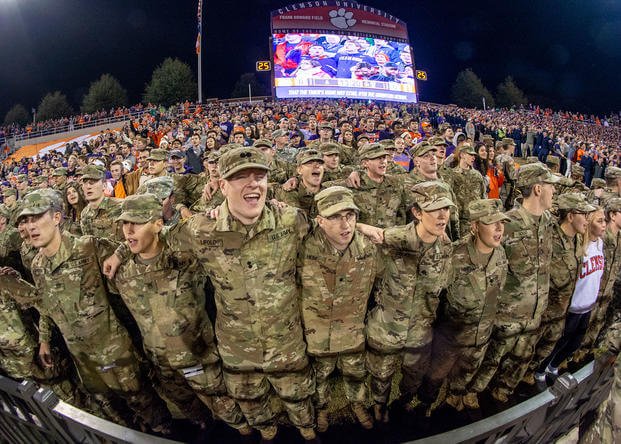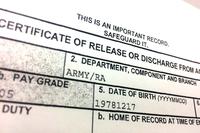Did you know that there is a military alphabet? This is a special phonetic alphabet that is used by the military to communicate over radios and other devices. The military alphabet was created in order to improve communication among military members.
What is the Military Phonetic Alphabet?
The military phonetic alphabet is a set of 26 words that are used to spell out letters when communicating over the radio or telephone. This system helps to ensure clarity and accuracy in communication, especially in noisy or difficult environments. The military phonetic alphabet consists of the standard English alphabet, plus a few extra words that are specific to military use. Some of these words include "Alpha," "Bravo," and "Charlie."
Each word in the military phonetic alphabet corresponds to a letter of the regular English alphabet. In order to make sure everyone is using the same pronunciation guide, all military members are taught this phonetic alphabet upon entering service.
Related: Learn how to join the military

The Military Alphabet During World War II
During World War II, the United States military used a modified version of the Joint Army/Navy Phonetic Alphabet (JANAP). This was adopted in 1941 and continued to be used until 1957 when it was officially replaced by the IRSA. Today the only parts of the JANAP WWII-era alphabet still in use are "Charlie," "Mike," "Victor" and "X-Ray."
History of the Military Alphabet
The military alphabet is also known as the International Radiotelephony Spelling Alphabet (IRSA). It was created by the International Civil Aviation Organization (ICAO).
The IRSA is used to spell out words and letters over radio. This helps prevent confusion between similar sounding words. The first official version of the military alphabet was adopted in 1927, although a version was used as early as 1913. The current version, which is also the NATO alphabet and used by the countries of NATO, was adopted in 1957.
Related: Understanding Military Time
Military Slang Phrases
The military alphabet is often used for acronyms of military slang phrases. For example, Bravo Zulu or "BZ" is used to indicate general approval or appreciation. The phrase originated in the Royal Navy of Great Britain and has been used by navies and the military around the world ever since.
Learn more about military slang phrases.
The Military Alphabet
To see the military alphabet in action, check out Military.com's glossary of military acronyms and glossary of military terms and slang.
| Letter | 1957-Present | Morse Code | 1913 | 1927 | 1938 | World War II |
| A | Alfa (or Alpha) | . _ | Able | Affirmative | Affirm | Affirm (Able) |
| B | Bravo | _ . . . | Boy | Baker | Baker | Baker |
| C | Charlie | _ . _ . | Cast | Cast | Cast | Charlie |
| D | Delta | _ . . | Dog | Dog | Dog | Dog |
| E | Echo | . | Easy | Easy | Easy | Easy |
| F | Foxtrot | . . _ . | Fox | Fox | Fox | Fox |
| G | Golf | _ _ . | George | George | George | George |
| H | Hotel | . . . . | Have | Hypo | Hypo | How |
| I | India | . . | Item | Interrogatory | Int | Int (Item) |
| J | Juliett | . _ _ _ | Jig | Jig | Jig | Jig |
| K | Kilo | _ . _ | King | King | King | King |
| L | Lima | . _ . . | Love | Love | Love | Love |
| M | Mike | _ _ | Mike | Mike | Mike | Mike |
| N | November | _ . | Nan | Negative | Negat | Negat (Nan) |
| O | Oscar | _ _ _ | Oboe | Option | Option | Option (Oboe) |
| P | Papa | . _ _ . | Pup | Preparatory | Prep | Prep (Peter) |
| Q | Quebec | _ _ . _ | Quack | Quack | Queen | Queen |
| R | Romeo | . _ . | Rush | Roger | Roger | Roger |
| S | Sierra | . . . | Sail | Sail | Sail | Sugar |
| T | Tango | _ | Tare | Tare | Tare | Tare |
| U | Uniform | . . _ | Unit | Unit | Unit | Uncle |
| V | Victor | . . . _ | Vice | Vice | Victor | Victor |
| W | Whiskey | . _ _ | Watch | William | William | William |
| X | X-ray | _ . . _ | X-ray | X-ray | X-ray | X-ray |
| Y | Yankee | _ . _ _ | Yoke | Yoke | Yoke | Yoke |
| Z | Zulu | _ _ . . | Zed | Zed | Zed | Zebra |
Ready to Join the Military?
We can put you in touch with recruiters from the different military branches. Learn about the benefits of serving your country, paying for school, military career paths, and more: sign up now and hear from a recruiter near you












